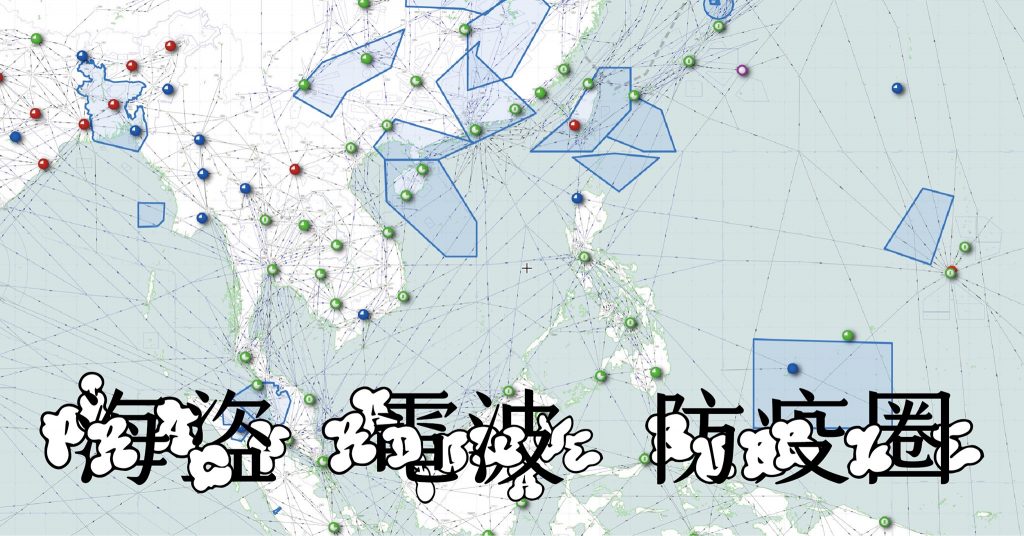Browse

From World War to Post-Cold War, the piracy, the radio, and the bubble can be understood as three non-normalcy situations in which the violations of borders are most observed around the Pacific Rim. The development of Radio broadcasting in Taiwan originated from the late 1930s, when Japanese colonial regime sought to promote the idea of The Greater East Asia Co-Prosperity Sphere to Southern China and Nanyang (maritime Southeast Asia). Taiwan was then the southernmost territory to exert its co-ordination (Gleichschaltung) effect through the radio. The rampant Southeast Asia pirates can be traced back to the time before Koxinga occupied Penghu to expel the Dutch. Meanwhile, the Malacca pirates are related to Orang Laut in the Malay Archipelago today. The strait’s narrow passage makes it difficult to wipe out illicit activities in this area. Therefore, Singapore, Indonesia and Malaysia are forced to integrate patrol resources. These situations foreground “piracy” as a metaphor for the power beyond modern border control.
Since the COVID-19 pandemic has become the global new norm, the New Zealand government reportedly considered to create a “bubble” to include the countries that have successfully contained COVID-19 outbreak in the Asia Pacific region. To ensure economic development, it would prioritize extending the Trans-Tasman Bubble (that comprises New Zealand and Australia) to countries like South Korea and Taiwan, to ease the travel restrictions. “Tasman” refers to the sea separating the two countries. The biopolitics of this bubble is a different concept than the kinship nature of the imagined community (the nation). Under this new norm of the pandemic, how can Nusantara Archive, derived from Malay Archipelago, reimagine the community (from the biological construct to the political exclusion) through the three keywords (the piracy, the radiowave, and the bubble)? And how will we develop our responses to the global currency crisis from these non-normal historical practices in the region?
Organizer: Open Contemporary Art Center; special thanks to Ruang Kongsi (Penang), Okui Lala & Hoo Fan Chon
Sponsor: National Culture and Arts Foundation (NCAF)